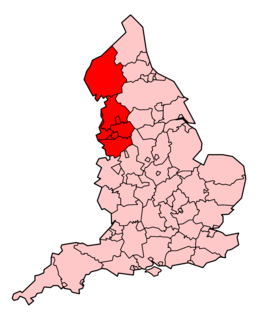The Lancashire Wildlife Trust or Wildlife Trust for Lancashire, Manchester and North Merseyside is a wildlife trust covering the county of Lancashire and parts of Greater Manchester and Merseyside in England.

Lancashire is a ceremonial county in North West England. The administrative centre is Preston. The county has a population of 1,449,300 and an area of 1,189 square miles (3,080 km2). People from Lancashire are known as Lancastrians.

Greater Manchester is a metropolitan county in North West England, with a population of 2.8 million. It encompasses one of the largest metropolitan areas in the United Kingdom and comprises ten metropolitan boroughs: Bolton, Bury, Oldham, Rochdale, Stockport, Tameside, Trafford, Wigan, and the cities of Manchester and Salford. Greater Manchester was created on 1 April 1974 as a result of the Local Government Act 1972; and designated a functional city region on 1 April 2011.

Merseyside is a metropolitan county in North West England, with a population of 1.38 million. It encompasses the metropolitan area centred on both banks of the lower reaches of the Mersey Estuary and comprises five metropolitan boroughs: Knowsley, St Helens, Sefton, Wirral, and the city of Liverpool. Merseyside, which was created on 1 April 1974 as a result of the Local Government Act 1972, takes its name from the River Mersey.
Contents
It includes all of the ceremonial county of Lancashire, including the unitary authority districts of Blackburn with Darwen and Blackpool; from Greater Manchester the districts of Bolton, Bury, Manchester, Oldham, Rochdale, Salford and Wigan; and from Merseyside the districts of Liverpool, Sefton, Knowsley and St Helens. It also covers adjacent areas of the Irish Sea including parts of Morecambe Bay and Liverpool Bay.
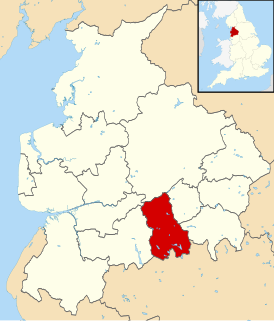
Blackburn with Darwen is a unitary authority area in Lancashire, North West England. It consists of Blackburn, the small town of Darwen to the south of it, and the surrounding countryside. The population of the Unitary Authority taken at the 2011 census was 147,489.
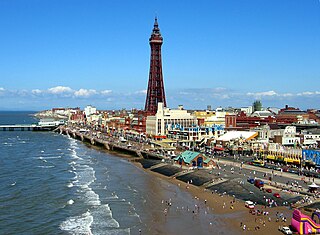
Blackpool is a seaside resort on the Lancashire coast in North West England. The town is on the Irish Sea, between the Ribble and Wyre estuaries, 15 miles (24 km) northwest of Preston, 27 miles (43 km) north of Liverpool, 28 miles (45 km) northwest of Bolton and 40 miles (64 km) northwest of Manchester. It had an estimated population of 139,720 at the 2011 Census, making it the most populous town in Lancashire.
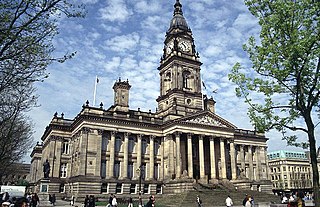
The Metropolitan Borough of Bolton is a metropolitan borough of Greater Manchester, England. It is named after its largest settlement, the large town of Bolton, but covers a far larger area which includes Blackrod, Farnworth, Horwich, Kearsley and Westhoughton, and a suburban and rural element from the West Pennine Moors. The borough has a population of 276,800, and is administered from Bolton Town Hall.
The trust is part of the Wildlife Trusts partnership, which is the UK's leading conservation charity dedicated to all wildlife. The network of 47 local Wildlife Trusts and its junior branch, Wildlife Watch, work together with local communities to protect wildlife in all habitats across the UK, in towns, countryside, wetlands and seas.

The Wildlife Trusts, the trading name of the Royal Society of Wildlife Trusts, is an organisation made up of 46 local Wildlife Trusts in the United Kingdom, the Isle of Man and Alderney. The Wildlife Trusts, between them, look after around 2,300 nature reserves covering more than 98,000 hectares. As of 2017 they have a combined membership of over 800,000 members.
The trust was formed as the Lancashire Naturalists' Trust in 1962 [1] by a group of naturalists who wanted to help protect the wildlife of Lancashire. It is now the leading local environmental charity in this region. Following the local government reforms of 1974 it transferred its remit and tenure in Furness to the newly constituted Cumbria Wildlife Trust. It was renamed the Lancashire Trust for Nature Conservation in 1980, and the Lancashire Wildlife Trust in 1992. [1] The Charity Commission's record also lists The Lancashire Trust for Nature Conservation with Greater Manchester and Merseyside as a former name, and The Wildlife Trust (Lancashire, Manchester, N. Merseyside) as a working name. [2]

Furness is a peninsula and region of Cumbria in northwestern England. Together with the Cartmel Peninsula it forms North Lonsdale, historically an exclave of Lancashire.
Cumbria Wildlife Trust is a wildlife trust covering the county of Cumbria, England. It runs more than 40 nature reserves, and aims to broaden the awareness and knowledge of the wildlife in the county.
The trust's mission is to work for a region richer in wildlife by the protection and enhancement of species and habitats, both common and rare; and to work towards public recognition that a healthy environment rich in wildlife and managed on sustainable principles, is essential for continued human existence.
The trust's HQ and Lancashire Office is in Cuerden Valley Park south of Bamber Bridge, near Preston. Its Greater Manchester Office is in east Bolton and its Merseyside Office is within the Port of Liverpool.

Bamber Bridge is an urban village in Lancashire, England, 3 miles (5 km) south-east of the city of Preston, in the borough of South Ribble. The name derives from the Old English "bēam" and "brycg", which probably means "tree-trunk bridge". It is mentioned in an undated medieval document. Bamber Bridge is often referred to as "Brig" by residents. People born in Bamber Bridge are known as "Briggers". The total population for the three active Bamber Bridge Wards was 12,126 at the 2001 census, increasing to a total of 13,945 at the 2011 Census.
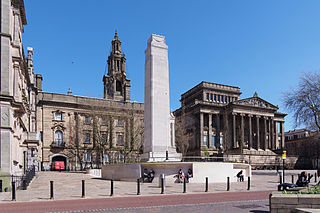
Preston is a city and the administrative centre of Lancashire, England, on the north bank of the River Ribble.

Bolton is a town in Greater Manchester in North West England. A former mill town, Bolton has been a production centre for textiles since Flemish weavers settled in the area in the 14th century, introducing a wool and cotton-weaving tradition. The urbanisation and development of the town largely coincided with the introduction of textile manufacture during the Industrial Revolution. Bolton was a 19th-century boomtown, and at its zenith in 1929 its 216 cotton mills and 26 bleaching and dyeing works made it one of the largest and most productive centres of cotton spinning in the world. The British cotton industry declined sharply after the First World War, and by the 1980s cotton manufacture had virtually ceased in Bolton.





